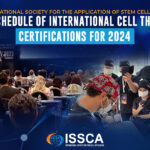Although they can perform surgeries, osteopathic physicians try to avoid doing so whenever possible. Because of this, PRP seems to be an excellent fit for their practice. Since Osteopathy was built on the idea of self-healing, PRP seems to be a perfect fit.
A little while ago, PRP research was reviewed by The Journal Of The American Osteopathic Association, and concluded that more studies and evidence would be needed to make a solid statement on it. A little while later, a case study was filed, showcasing an 18 year old high school football player who suffered from a sports injury. The case study showed that the muscle injury healed rapidly under the effect of PRP therapy. So although PRP is not constantly held up on a pedestal by the mainstream yet, does not mean that Osteopathic Physicians can’t learn a lot or benefit from the use of PRP in their practice.
How Osteopathic Physicians can Benefit From PRP
- It’s Holistic
Due to the fact that Osteopathic Physicians prefer to treat the patient, as opposed to just treating a disease or the symptoms, PRP is a great fit. It works by using the body’s own resources and mechanics and helps the body to heal itself over time. It works because, instead of simply dealing with symptoms, like many practices and conventional medicine does, it works to deal with the problem head on.
For instance, there are many examples of PRP therapy taking the place of surgery and medicine. Such as the cases where female patients were able to revive their sex drive, although they were initially treated for incontinence. So although PRP therapy was created and pushed by allopathic doctors at first, PRP works wonders in the field of Osteopathic medicine, and can become one of the best methods of treatment for Osteopathic physicians.
- Musculoskeletal Issues
In some practices, musculoskeletal pain can be something that Osteopathic Physicians deal with often. However, it is good to note that PRP is quickly becoming one of the main treatments for these kinds of issues. For instance, many researchers believe that PRP should be the main choice for people who suffer from knee meniscus.
In 2016, University of Missouri Doctor Patrick Smith published a FDA-sanctioned double-blind randomized placebo controlled clinical trial on PRP. These kinds of trials are considered the gold standard in research. The results of the study was that PRP provided safe and notable benefits for people who suffer from knee Osteoarthritis.
- PRP has a great deal of potential
The third and most important reason why all physicians, including Osteopathic Physicians, should start using PRP therapy is due to how wide its scope is. Due to the fact that PRP is simple and common, it is safe to say that if PRP can work on knee joints and tendons, that it most likely works on other tendons, joints, bones, and muscles as well. PRP will soon be a commonplace treatment when it comes to pretty much all musculoskeletal diseases.
This means that PRP has a near limitless potential. This is especially important for Osteopathic Physicians, as if there is a problem with the patients wrist, it could be that the main issue appears further down the arm. This is why multiple PRP injections on various areas of the arm can work to not just heal the issue, but also enhance the other traditional methods that are used. This will help restore the balance t the body, and give full functionality back to the patient.
American Academy of Regenerative Medicine Doctor Peter Lewis has administered over 100,000 PRP injections to over 12,000 patients. He claims that more than 80% of his patients who have gotten PRP therapy has had fantastic results. Even people who have claimed to need surgery could be benefited by the use of PRP.
Are They FDA Approved?
As of this year, PRP treatments are not yet subject to FDA approval. This is because all of the treatments are performed on the same day as the extraction, and uses only materials that are already inside the patients own body. Because of this, the PRP therapy is within the scope of the FDA Code of Federal Regulation title 21, part 1270, 1271.1. As a result, it is exempt from needing approval.







